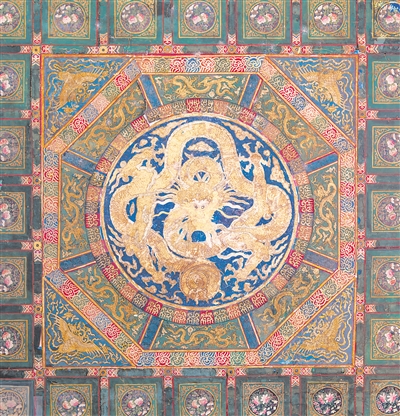
 |
| Traditional Chinese color architectural decorative motifs on the ceiling of the Palace Museum. (PHOTO: VCG) |
Traditional Chinese color architectural motifs on buildings make an important contribution to the world's architectural art history. They not only demonstrate China's unique art aesthetics, but also reflect the culture and ideological concept of the Chinese people.
The color architectural motifs were first used to protect the wooden frame from water and insects, and then serve the purpose of decoration and hierarchy for ancient Chinese architecture. Paint was originally applied to wooden structures to protect the wood from moisture, rot and moths, thus prolonging the life of the building. Later, the focus shifted to decoration, and as late as the Song Dynasty (960-1279), colored motifs became an integral part of palace construction. The usually luxurious and elegant motifs followed strict rules regarding the degree of decoration and the amount of gold used, according to the status and function of the building. This combination of aesthetics and functionality reflects traditional Chinese philosophy and ethics.
Official designers in the Qing Dynasty (1644-1911) developed a range of color painting techniques used in official buildings that varied in style and subject matter: Hexi was characterized by splendor and bright colors; Xuanzi was known for large and vibrant paintings; and elegant Sushi paintings mimicked a style popular in eastern China.
The process of these color motifs began with templates. Symmetrical design is an integral part of Chinese architecture, so the first step is to draw the center line of the painting and fix the pre-designed pattern on the painting position. The second step is to shoot the score sheet, which is fixed on the pre-designed paper on the building, and then the powder bag is tapped along the pattern lines to present the template on the building. Last, glue, oil and powder are blended to form a paste, which is used on the lines to form a relief effect on the color painting to further reflect the three-dimensional nature of the color painting.
As a typical representative of Chinese traditional culture, architectural decorative motifs have a profound significance in the history of Chinese architecture. Nowadays, they tend to be more diverse and personalized, and their cultural connotation has been integrated into various fields.







